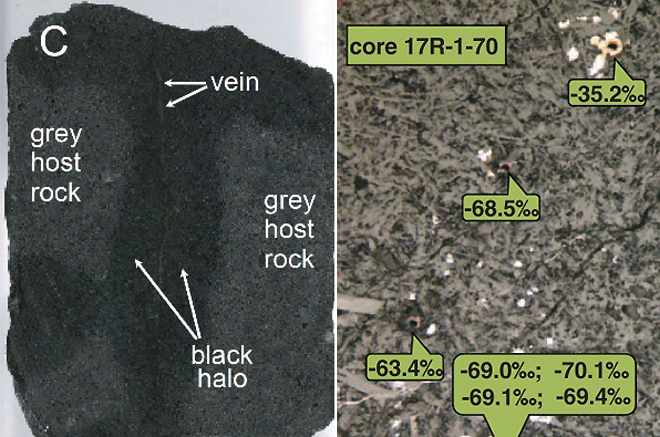
Persisting in microscopic cracks in the basalt rocks of Earth's oceanic crust is a complex microbial ecosystem fueled entirely by chemical reactions with rocks and seawater, rather than sunlight or the organic byproducts of light-harvesting terrestrial and aquatic ecosystems.
Such modes of life, technically known as chemosynthetic, are not unprecedented, having also been found deep in mine shafts and around seafloor hydrothermal vents. Never before, though, have they been found on so vast a scale. In pure geographical area, these oceanic crust systems may contain the largest ecosystem on Earth.
"We know that Earth's oceanic crust accounts for 60 percent of Earth's surface, and on average is four miles thick," said geomicrobiologist Mark Lever of Denmark's Aarhuis University, part of a research team that describes the new systems March 14 in Science.
If what the researchers found resembles what's found elsewhere below Earth's oceans, continued Lever, "the largest ecosystem on Earth, by volume, is supported by chemosynthesis."
The paper represents the culmination of findings that have gathered over the last two decades, starting in the 1990s with the discovery of strange microscopic holes in the basalt rocks that form much of Earth's outer crust, floating above the planet's viscous upper mantle and below seafloor sediments.
Click HERE to read the rest of this article on wired.com.



Reader Comments
to our Newsletter